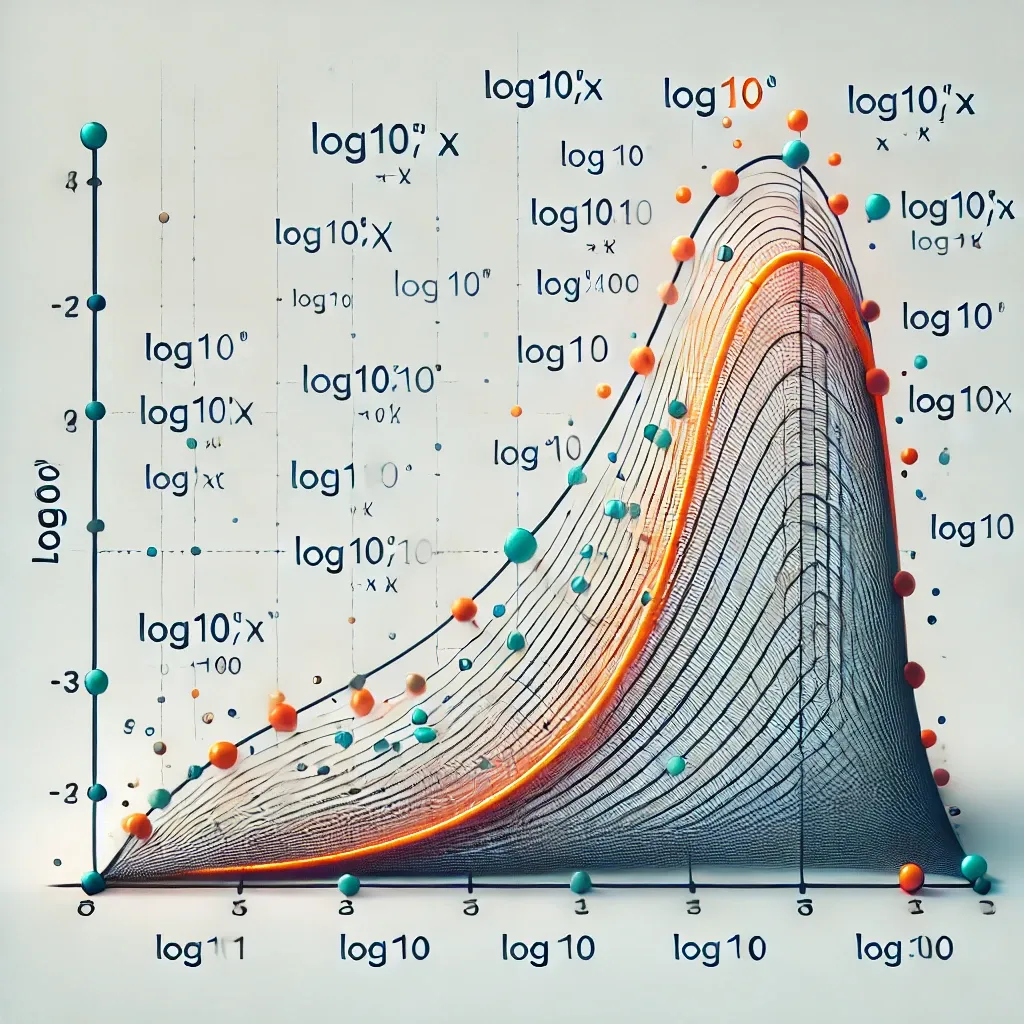What is the significance of log10 in mathematics? Ever wondered about how it works, its reverse function, and the value of log10 for common numbers? Dive into the details of log10 and its various uses!
The logarithm base 10, commonly denoted as log10, is one of the most widely used mathematical functions. It’s essential in many fields, from algebra and calculus to data science and engineering. In this article, we’ll explore the log10 function, examine its reverse, and understand how it behaves for various inputs, such as log10(1), log10(10), and more.
log10 Graph: Visualizing the Function
The log10 function is a logarithmic function where the base is 10. Unlike linear or polynomial functions, logarithms grow at a slower rate as the input increases. This gives the graph a characteristic curve.
What the log10 Graph Looks Like
The graph of log10(x) starts at negative infinity as x approaches 0 from the positive side. It then increases slowly as x gets larger. The graph is a continuous curve and shows several key behaviors:
-
Log10(1) = 0 This is because log10 of any number raised to the power of 0 is 1.
-
Log10(10) = 1 This reflects that the logarithm base 10 of 10 is simply 1.
-
Log10(100) = 2 Here, the value represents that 10 raised to the power of 2 equals 100.
-
Log10(10000) = 4 Similarly, 10 raised to the power of 4 equals 10000.
These points clearly show how the log10 function increases and help explain its practical uses in scientific and engineering contexts.
👉 Learn more about the log10 graph 👈
Real-World Application of log10
In real-world applications, log10 is often used for scaling in cases where data spans a large range. For example, the Richter scale used for measuring earthquake magnitudes is logarithmic, meaning that each unit increase represents a tenfold increase in the strength of the earthquake.
Another example is in sound intensity measurement, where decibels are calculated using a logarithmic scale. In both cases, log10 provides a means of managing large numbers in a manageable form.
log10 Reverse Function: Exploring the Inverse
In many situations, you might need to undo the logarithmic operation, which is where the log10 reverse function comes into play. The reverse of a logarithm is known as the exponential function. In the case of log10, the reverse function is represented as:
-
10^x.
This means that if log10(x) = y, then the reverse function (10^y) will return x. The reverse function is crucial for solving equations where you need to find the original value before the logarithm was applied.
Examples of the Reverse Function:
-
If log10(x) = 2, then x = 10^2 = 100.
-
If log10(x) = 3, then x = 10^3 = 1000.
The reverse function also has applications in fields like data science, where algorithms often require working backward from log-transformed data.
👉 Discover more about the reverse function 👈
Using the Reverse Function in Problem Solving
Consider solving an exponential equation like 10^x = 1000. To find the value of x, we can take the log10 of both sides of the equation:
log10(10^x) = log10(1000)
This simplifies to:
x = log10(1000) = 3.
The reverse function thus allows us to solve such equations easily.
Log10 of Common Values: What Do They Mean?
To understand how log10 behaves with different values, let’s examine some specific examples:
Log10 of 1, 10, and 100:
-
Log10(1) = 0 This is because any logarithm of 1, regardless of the base, is always 0.
-
Log10(10) = 1 This is a direct result of the definition of the base 10 logarithm.
-
Log10(100) = 2 Since 10^2 = 100, it follows that the log10 of 100 is 2.
Other Useful Values:
-
Log10(10000) = 4 This is another common value, representing a large number in a compact form.
-
Log10(0.1) = -1 Log10 is also useful for expressing fractions or very small numbers, where negative results are common.
👉 Dive deeper into log10 values 👈
Practical Applications of Log10 Values:
In engineering and computer science, knowing the log10 of values like 10, 100, and 10000 is useful for quickly comparing orders of magnitude. For instance, when working with large datasets or dealing with powers of 10, log10 provides a shorthand way of expressing large quantities without dealing with cumbersome numbers.
Conclusion
The log10 function is one of the most essential mathematical concepts used across various fields, from basic algebra to advanced data science. The log10 graph offers a visual representation of its behavior, showing how it increases as x grows. Meanwhile, understanding the log10 reverse function allows us to solve equations effectively. Whether you are dealing with sound intensity or measuring earthquakes, log10 is a tool that makes working with large numbers more manageable and intuitive.
Remember, math isn’t just about solving equations; it’s about understanding the relationships between numbers and how they scale.






